Gustavo Kuerten's Sports Injuries
Type of Sport: Tennis
Gustavo Kuerten's Sports Injuries Table
| Type | Area | Date | Consequences | Content | How It Happened | Recovery Duration | Rehabilitation Details | Impact On Career | Psychological Impact | Previous Injuries | Return To Competition | Severity | Treatment | Medical Staff | Long Term Impact | Preventive Measures | Competition Missed | Initial Symptoms | Re Injury Risk | Support System | Rehabilitation Location |
|---|---|---|---|---|---|---|---|---|---|---|---|---|---|---|---|---|---|---|---|---|---|
| Ankle Injuries | Ankle, right | 2002-03-14 | Immediate pain and swelling, resulting in limited mobility. | The ankle injury was a setback in his career, requiring rest and rehabilitation. | Kuerten rolled his ankle during a match while moving laterally on the court. | Several weeks | Included rest, ice, compression, elevation (RICE), and physical therapy. | Temporary setback, affecting his performance and preparation for upcoming tournaments. | Frustration due to interruption in training and competition schedule. | No major previous ankle injuries reported. | Returned to competition after rehabilitation but had to be cautious with movement. | Moderate | Conservative treatment with RICE and physical therapy. | Physiotherapists and sports medicine doctors. | No significant long-term impact reported. | Ankle braces and strengthening exercises. | Missed a few weeks of competition. | Pain, swelling, and difficulty bearing weight on the right ankle. | Moderate, with potential for re-injury if not prop | Medical team and coaching staff. | Local sports medicine clinics and rehabilitation centers. |
| Hip Injuries | Hip, both sides | 2001-11-30 | The injury severely affected his mobility and performance on the court. | Kuerten's hip injury was one of the most significant in his career, leading to multiple surgeries and a long recovery period. | Gustavo Kuerten suffered a significant hip injury during a match, which was exacerbated by continuous play. | Several months | Intensive physical therapy and multiple surgeries were required to address the hip issues. | The hip injuries significantly limited his ability to compete at the highest level and ultimately contributed to his early retirement. | The persistent pain and inability to perform at his peak caused considerable frustration and stress. | No major previous hip injuries reported. | Kuerten made several attempts to return to competition but was never able to regain his top form. | High | Surgical intervention followed by extensive rehabilitation. | A team of orthopedic surgeons and physiotherapists. | Chronic pain and reduced mobility, ultimately leading to retirement. | None effectively implemented due to the severity of the injury. | Missed several tournaments including Grand Slam events. | Severe pain and limited movement in the hip area. | High, due to the chronic nature of the injury. | Family, friends, and professional medical staff. | Various medical facilities and rehabilitation centers. |
| Knee Injuries | Knee, right | 2004-04-30 | Immediate swelling and instability in the knee. | The knee injury required surgical intervention and a lengthy rehabilitation process. | During a match, Kuerten twisted his right knee awkwardly while attempting a quick directional change. | Several months | Post-surgery rehabilitation included strength training and physical therapy. | Further limited his ability to compete and maintain a high ranking. | Added to the frustration and mental burden of ongoing injury struggles. | Previous minor knee issues, but none as severe. | Returned to competition but was not able to perform consistently. | Moderate to high | Surgery followed by intensive rehabilitation. | Orthopedic surgeons and physiotherapists. | Ongoing issues with knee stability and pain. | Knee braces and targeted physical therapy. | Missed several months of the ATP Tour. | Sharp pain and swelling in the right knee. | Moderate to high, given the nature of the injury. | Medical team, family, and coaching staff. | Specialized sports rehabilitation centers. |
Gustavo Kuerten's Sports Injuries Videos
How Gustavo Kuerten Changed Tennis Forever
In 1997, a little known 20-year-old Brazilian made history by being crowned the French Open champion. No one would have predicted at the time the lasting impact it would have and how it would be the beginning of a whole new era for the sport while launching a previously unknown brand into worldwide fame. This is the story of how this man, Gustavo Kuerten, changed tennis forever.
So how did Kuerten actually win the French Open as the 66th ranked player in the world? When we take a look back at his run to the title, we can see that Guga had big serves and powerful ground strokes, including that signature oil painting of a backhand. However, that only tells part of the story. While we can't deny the fact that he would go on to become a great player, winning two more French Opens, something else played a big role in his unexpected victory. You see, unbeknownst to most people, he had a secret weapon lurking inside his tennis bag. No, it's not the racket that made him gain the edge to beat all those top clay court players at the time, but instead, it is the soul of the racket. That's right, we're talking about the strings.
Tennis strings can be categorized into two types: natural gut and synthetic strings. The natural gut is a string made from cow's intestines and regarded as the gold standard at the time due to its unmatched playability. Up until the early 90s, the most common types of synthetic strings were the cheap nylon synthetic gut, the soft multifilament, and the bulletproof Kevlar string. Then, in 1991, a small family-owned Belgian company called Luxilon that initially produced sewing thread and yarn launched their new tennis string. The Luxilon Big Banger Original was born. The strings were made of polyester, or poly for short. Luxilon was actually not the first to introduce the polystring; in fact, polystrings were available back in the early 80s, with the German brand Polystar believed to be the first to produce them. The early reception to the polystrings was rather poor, with most recreational players finding the string too stiff and harsh on the arm with poor tension maintenance. The only benefit it had seemed to be its durability.
However, stronger players, especially clay court specialists, found that they were able to take big cuts at the ball and still keep the ball in play because of the string's low power and high spin rate. Studies have shown that players who can generate sufficient racket head speed will make the slippery and stiff poly strings move by sliding upon contact with the ball and quickly snap back into position. Other types of strings will have less of this snapback effect. This slide and snapback movement of the strings would produce a tangential torque on the ball to generate the heavy spin. The increasing popularity of polystrings caused other string manufacturers such as Babolat, Hirschbaum, and Gosen to begin producing. This led Luxilon to develop and produce polystrings that added more additives to offer improved characteristics, pioneering the second-gen polystring known as the co-poly. The strings were softer, more elastic, and had better tension maintenance than the previous poly strings while maintaining the same durability, control, and spin. The successful use of the string by Kuerten would put the Luxilon brand in the spotlight.
More and more players started using polystrings. By the early 2000s, more than 70 percent of the top 100 players on the ATP and more than 50 percent of the top 100 players in the WTA were using Luxilon, while many of the rest were using copycat polystrings from other brands. The polystrings gave the returners the ability to hit the ball hard while making the ball dip with heavy topspin. Kuerten showed this at the Tennis Masters Cup in 2000, where he beat Pete Sampras in the semi-final. Some of the incredible shots he hit were dubbed the Luxilon Show. Sampras called the Luxilon strings. Kuerten would then face Andre Agassi in the final and once again played brilliantly. He won the match to finish the year as the world number one.
In his book "Open," Agassi talked about the polystrings as the biggest game changer in recent years, with the elastic poly able to create vicious topspin. He says it "has turned average players into greats and greats into legends." Agassi also recalled the first time he tried the string in Rome 2002 in a practice session; he didn't miss a ball in practice and would go on to win the Italian Open, calling it a miracle string. The string revolution was in full force, causing an evolution in how tennis was played. The effect of polystrings can be seen in the stroke technique, especially the forehand. It has evolved from being the classical, mostly linear stroke to becoming a more modern and evolved into the violent upwards risky shot today in what is called the next-gen forehand.
This would mark the beginning of the end for serve-and-volley tennis. Gone are the days of the 80s and 90s where serve-and-volleyers like Sampras and Boris Becker would dominate on the faster surfaces when baseline players struggled to defend against the net-rushing players. A look back at the ATP rankings since 1990 shows that serve-and-volleyers were dominant throughout the 90s, with routinely more than half of the players in the top 10 comprising these players. The emergence of the polystring in the late 90s coincided with the decision of tournament organizers to slow down courts and introduce heavier balls in the early 2000s, effectively killing the serve-and-volley game. Even Roger Federer ditched playing serve-and-volley early in his career to switch to a more all-court baseline game. After Tim Henman, Roddick, Stepanek, and Mario Ancic, there was a barren spell for net rushers from 2007 to 2010. Even though he didn't come to the net on every serve, Mardy Fish was perhaps the last serve-and-volleyer to reach the top 10 back in 2011. This playing style has since been mostly used only as a surprise tactic, with top players abandoning and leaving it in the cold.
Today, most pros use either full poly or a hybrid of poly and other strings. For example, Federer and Novak Djokovic play with natural gut in the mains and Luxilon in the crosses. Andy Murray plays with the reverse setup, with the Luxilon in the mains and gut in the crosses. In a hybrid setup, there is a big difference between which strings to choose in the cross (the horizontal strings) and the main (vertical strings). The mains are the dominant strings, which account for about 80 percent of the playability of the racket. This means that in Murray's poly main setup, the playability is stiffer with more control compared to Federer and Djokovic's natural gut main setup, which is softer and more powerful. Meanwhile, Rafael Nadal plays with full Babolat polystring. The combination of the spin, control, and durability of the polystring make it an ideal setup for a player.
Gustavo Kuerten will forever be remembered as the man who revolutionized the tennis string, changing the sport forever, while his lovable personality won the hearts of tennis fans worldwide.

Gustavo Kuerten still has it at 44 years old! 🔥
tennisfeed #tennis #shorts #tennisshorts #tennisvideo #tennispro #tennisvid #tennislife #tennislove #tennisforall
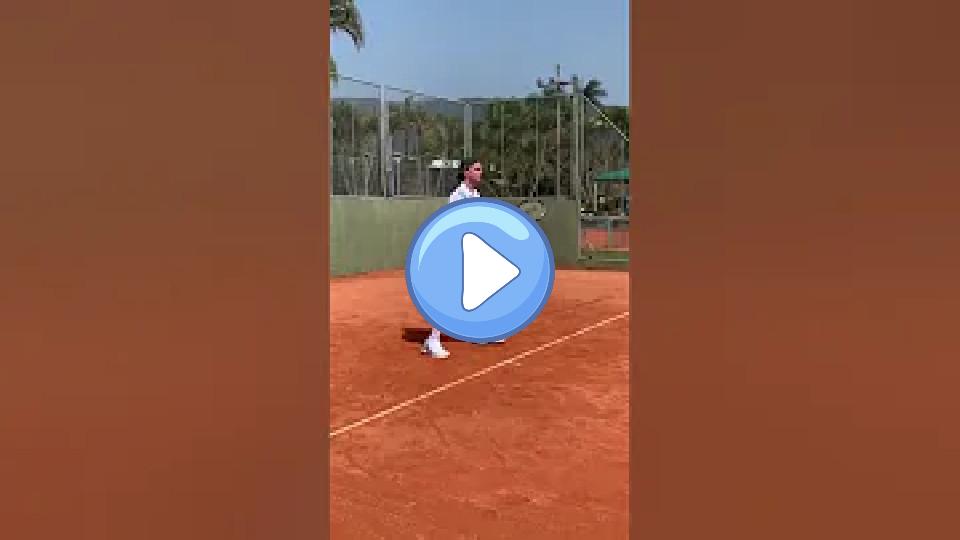
Gustavo Kuerten - Guga's Best Points
Tribute to my favorite Brazilian tennis player who's always smiling! Guga was number one in the world and won three Roland Garros titles.
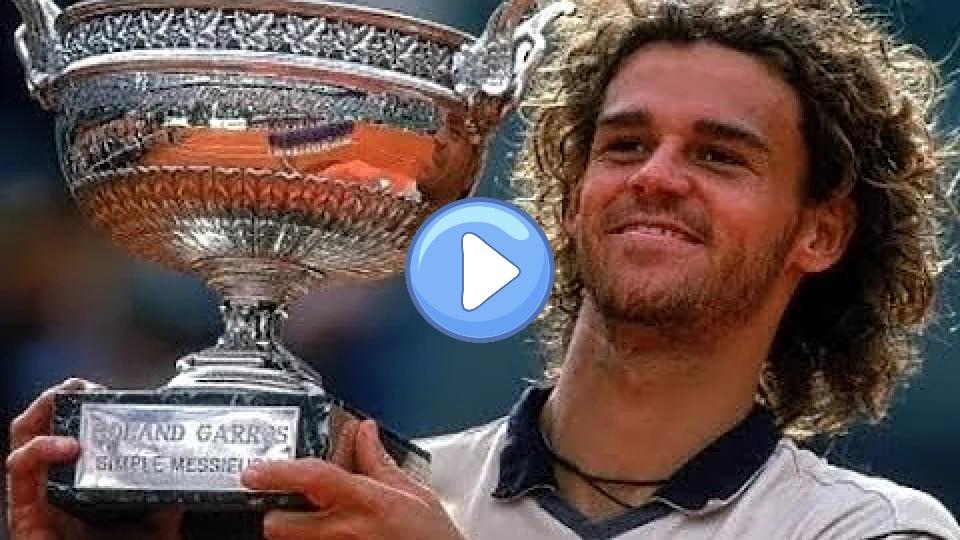
Gustavo Kuerten still has it at 43 years old!
Great seeing the Brazilian 3-time Grand Slam winner and former World No.1 on court, so enjoyable to watch! #tennisfeed
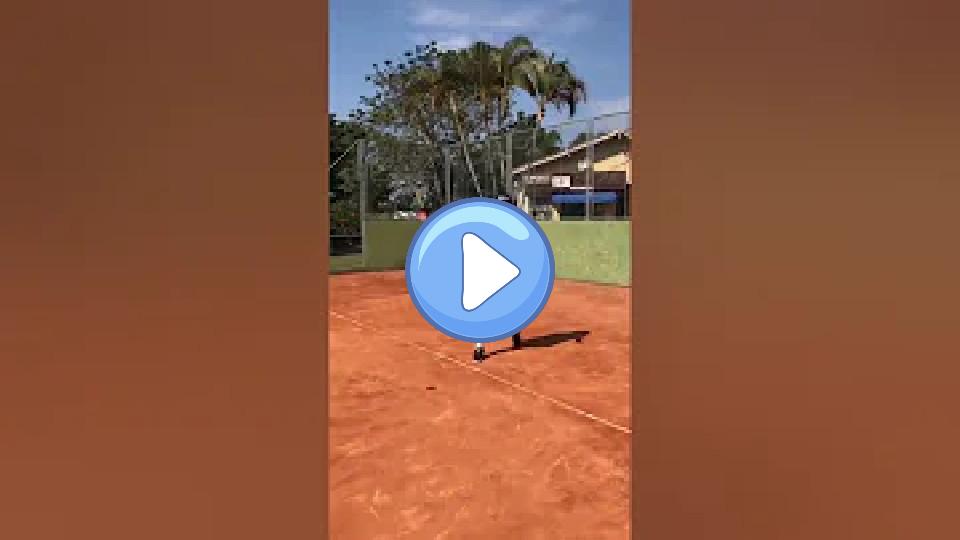
Gustavo Kuerten Practicing with Larry Passos - Impressive Groundstrokes
Here is some great footage of Guga Kuerten practicing in 2004.
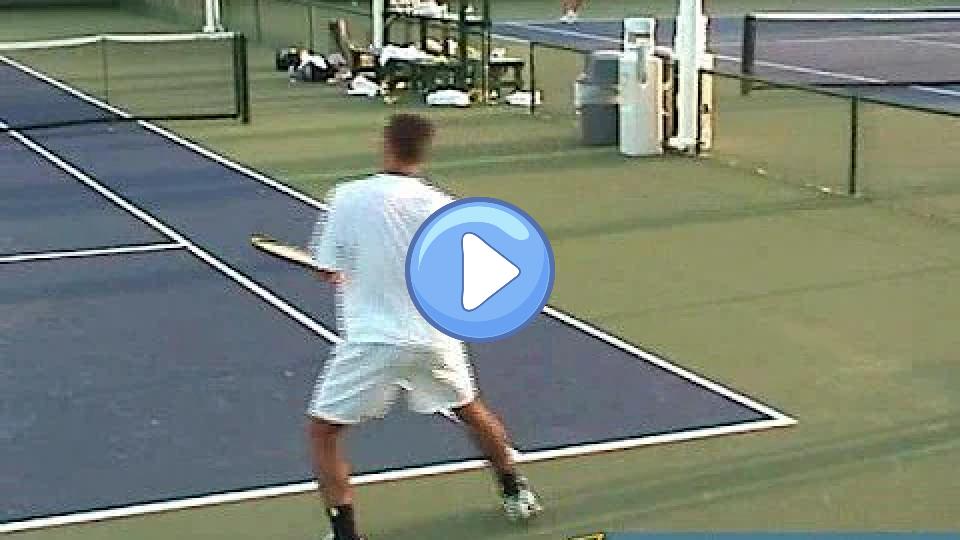
Sportv Report: Guga's Injury Featuring Dr. Lourenço Peixoto
Advancements in hip surgery, such as hip arthroscopy, enable athletes to return to sports today in...
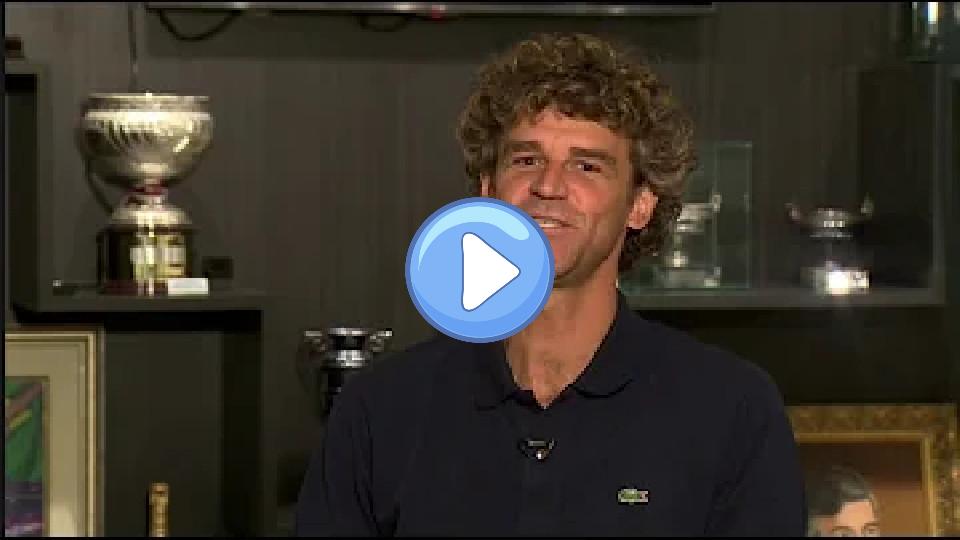
Gustavo Kuerten vs. Àlex Corretja Highlights - Men's Final | Roland Garros 2001
Gustavo Kuerten vs Àlex Corretja Highlights - Men's Final | Roland-Garros 2001. Upon Gustavo Kuerten's 20th French Open victory...
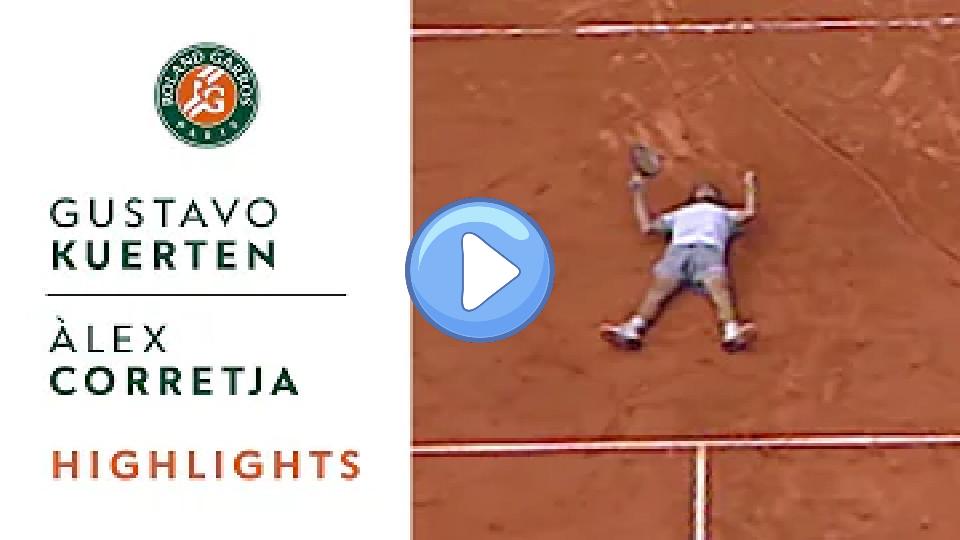
Gustavo Kuerten vs. Roger Federer Highlights - Men's Round 3 | Roland-Garros 2004
Gustavo Kuerten vs Roger Federer Highlights - Men's Round 3 | Roland-Garros 2004. On Gustavo Kuerten's 20th French Open...

